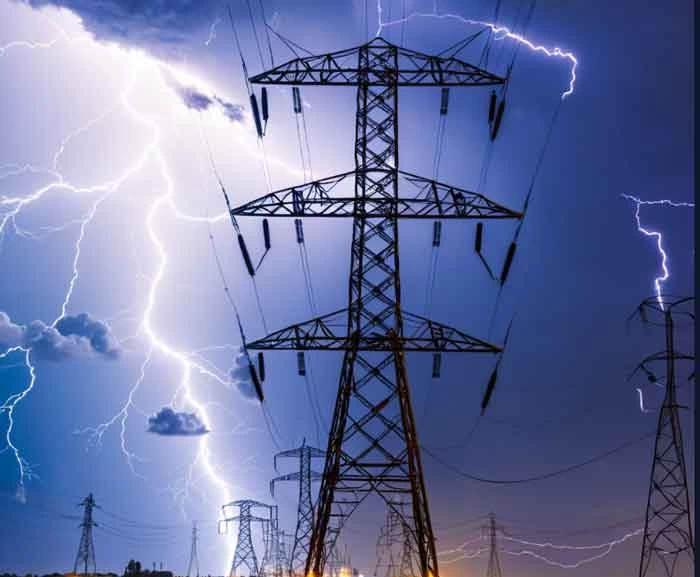Lightning Protection in Safeguarding Power Grids

Lightning protection is crucial for maintaining the integrity and functionality of critical infrastructure, particularly power grids and communication networks. These systems are vital for the socio-economic well-being of communities and the smooth operation of various sectors. This article explores the importance of lightning protection for these infrastructures, the potential consequences of lightning strikes, and the economic implications of system outages.
Visit Our Electrical Protection Study Course
Significance of Lightning Protection for Critical Infrastructure
Power grids and communication networks form the backbone of modern society, facilitating everything from daily communications to emergency services and economic activities. Lightning strikes pose a significant threat to these systems, capable of causing extensive damage, service interruptions, and even catastrophic failures.
Ensuring Continuous Operation
Effective lightning protection systems are essential to ensure the continuous operation of power and communication networks, minimizing downtime and maintaining service reliability.
Preventing Equipment Damage
Lightning strikes can cause severe damage to electrical and electronic components, leading to costly repairs and replacements. Lightning protection systems are designed to mitigate these risks by providing a safe path for lightning currents to ground.
Consequences of Lightning Strikes on Power Grids and Communication Networks
The impact of lightning on critical infrastructure can be substantial, affecting not only the physical systems but also the services and functions they support.
Service Interruptions and System Failures
A single lightning strike can disrupt power supply and communication services, affecting residential, commercial, and industrial users. In severe cases, it can lead to system-wide failures and blackouts.
Safety Hazards and Operational Risks
Lightning strikes increase the risk of fires, explosions, and other safety hazards, posing significant risks to equipment, buildings, and personnel. For power grids and communication networks, this can translate into operational and safety challenges that require immediate attention.
Economic Impact of Outages
The economic repercussions of lightning-induced outages in power grids and communication networks can be extensive, affecting various sectors and communities.
Direct Costs of Repair and Replacement
The immediate costs associated with repairing or replacing damaged equipment can be substantial, straining the financial resources of service providers and network operators.
Indirect Costs and Economic Losses
Service interruptions can lead to significant economic losses for businesses, emergency services, and consumers, impacting productivity, revenue, and public welfare.
Lightning Protection Strategies for Critical Infrastructure
To safeguard power grids and communication networks effectively, comprehensive lightning protection strategies must be implemented, tailored to the specific needs and vulnerabilities of these systems.
Comprehensive Risk Assessment
A thorough risk assessment is the foundation of any effective lightning protection strategy, identifying potential vulnerabilities and determining the appropriate level of protection required.
Integrated Protection Solutions
Lightning protection for critical infrastructure should be integrated and holistic, encompassing not only direct strike protection but also surge protection and grounding systems to ensure complete coverage.
Regular Maintenance and System Upgrades
Ongoing maintenance and periodic upgrades of lightning protection systems are crucial to maintain their effectiveness and adapt to evolving infrastructure needs and technological advancements.
Lightning protection plays a pivotal role in safeguarding critical infrastructure, particularly power grids and communication networks, from the potentially devastating effects of lightning strikes. Implementing effective lightning protection strategies is essential to ensure continuous operation, prevent equipment damage, and mitigate the economic impact of service outages. By prioritizing the protection of these vital systems, communities and economies can be shielded from the adverse effects of lightning-related incidents, ensuring stability and resilience in the face of natural threats.
